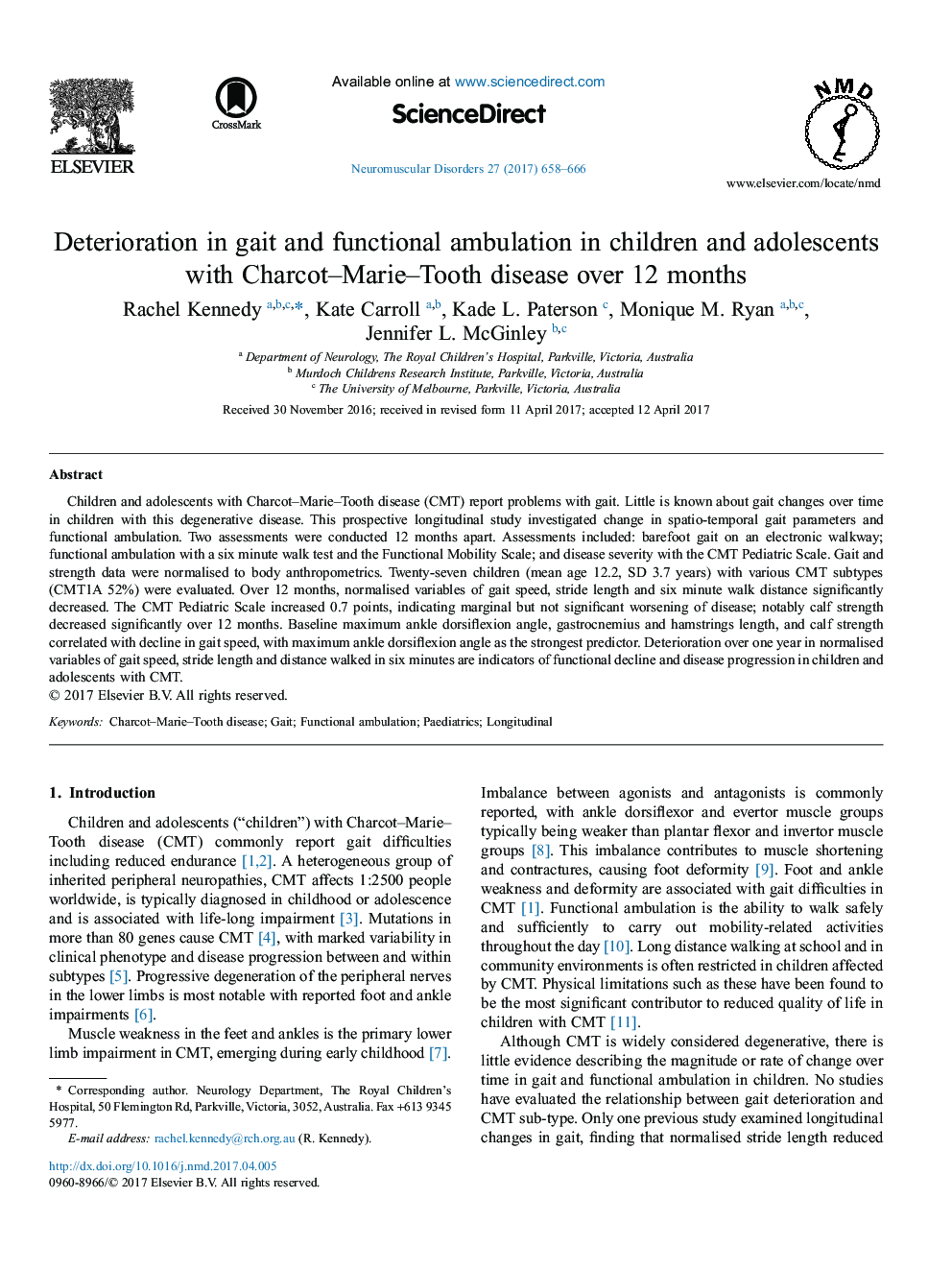| Article ID | Journal | Published Year | Pages | File Type |
|---|---|---|---|---|
| 5632193 | Neuromuscular Disorders | 2017 | 9 Pages |
â¢Deterioration in normalised gait speed and 6MWD reflect disease progression in CMT.â¢Deterioration was most notable when normalised for physical growth in children.â¢Normalised stride length decreased but normalised cadence remained stable.â¢Increasing calf weakness may contribute to reduced stride length and gait speed.â¢Gait assessment can screen for functional decline, informing management in CMT.
Children and adolescents with Charcot-Marie-Tooth disease (CMT) report problems with gait. Little is known about gait changes over time in children with this degenerative disease. This prospective longitudinal study investigated change in spatio-temporal gait parameters and functional ambulation. Two assessments were conducted 12 months apart. Assessments included: barefoot gait on an electronic walkway; functional ambulation with a six minute walk test and the Functional Mobility Scale; and disease severity with the CMT Pediatric Scale. Gait and strength data were normalised to body anthropometrics. Twenty-seven children (mean age 12.2, SD 3.7 years) with various CMT subtypes (CMT1A 52%) were evaluated. Over 12 months, normalised variables of gait speed, stride length and six minute walk distance significantly decreased. The CMT Pediatric Scale increased 0.7 points, indicating marginal but not significant worsening of disease; notably calf strength decreased significantly over 12 months. Baseline maximum ankle dorsiflexion angle, gastrocnemius and hamstrings length, and calf strength correlated with decline in gait speed, with maximum ankle dorsiflexion angle as the strongest predictor. Deterioration over one year in normalised variables of gait speed, stride length and distance walked in six minutes are indicators of functional decline and disease progression in children and adolescents with CMT.
